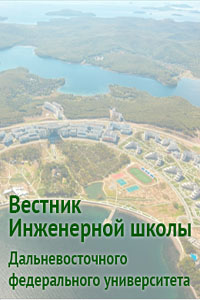Optimizing the Process of Potable Water Treatment during the Algal Bloom Period
DOI:
https://doi.org/10.24866/2227-6858/2023-2/64-72Keywords:
algal bloom period in water bodies, blue-green algae, filter medium, technological parameters of filtration, water qualityAbstract
In the process of treatment of water taken from regulated water bodies for public water supply, significant difficulties arise during the algal bloom period. The aim of the study is to optimize the water treatment technology in order to remove as much of the blue-green algae from the potable water as possible. In our work, we have performed a comparative analysis of the effect of the composition and structure of filter media on the degree of removal of blue-green algae. We have also studied the reagents' effect on the process of water treatment during the algal bloom period. Silica sand, natural zeolite from the Sibaysky deposit, and aqua antracite have been used as materials for the filter medium in our research. We have established that double-layer filter mediums of zeolite/sand and aqua antracite/sand clean water during the algal bloom period to the standard-acceptable norms within a long period of time (16-27 hours). During the algal bloom period, the protective effect from the filter mediums of zeolite/sand and aqua antracite/sand lasts 2.7-3 times longer than that from silica sand medium. But taking into consideration the technological parameters of the medium cleaning and the fact that the cost of zeolite is significantly lower than that of aqua antracite, the best possible option would be to use the double-layer filter medium of zeolite and sand. The comparison of the quality of water after using different flocculants in the filter mediums under study has revealed the advantage of flocculant BALTFLOC 28 F3, which ensures the maximum decrease in the water color. According to the obtained data, the sorption materials in the filter mediums help completely solve the problem of water odor during the algal bloom period. Therefore, the use of combined filter media, which have inorganic sorbents in their composition, is a promising direction in water treatment.
Downloads
Published
Issue
Section
License
Copyright (c) 2023 Far Eastern Federal Univercity: School of Engineering Bulletin

This work is licensed under a Creative Commons Attribution 4.0 International License.

